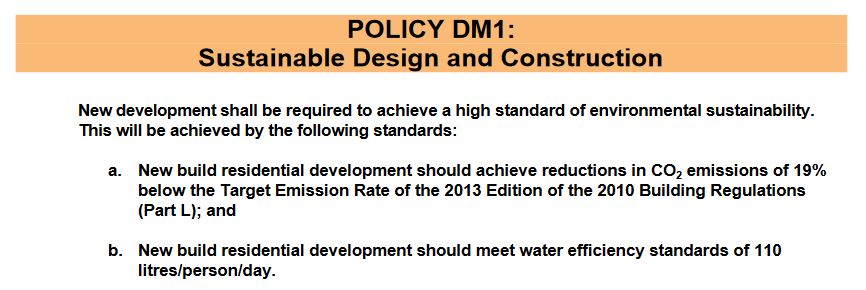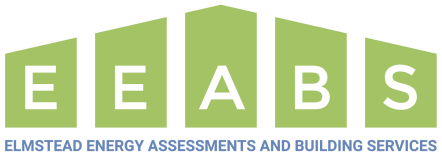What is an Energy Statement?
Most Local Planning Authorities now require a detailed Energy Statement to be submitted as a part of a proposed developments overall Planning Application. This can be for both Domestic and Commercial developments.
Local Planning Authority regulations will generally specify a reduction amount in CO2 emissions that must be achieved in order to satisfy their conditions, for example they could ask for a 10%, 20% or even 35% reduction in CO2 emissions against the current Part L Building Regulation targets.
As well as a reduction in CO2 emissions, Local Planning Authorities can also ask that a certain percentage of the energy used on site is generated by a renewable resource or for further sustainability targets to be met such as achieving a specified BREEAM rating or reducing water consumption.
As each Local Authorities planning requirements are different, the energy and sustainability targets within your proposed developments area would need to be researched or you could try talking with a local Planning Officer.
Energy Statements within Ipswich
For example, new developments within Ipswich would need to comply with the Ipswich Borough Council Core Strategy and Development Plan Document Policies DM1 and DM2.
 Policy DM1 asks for new build residential developments to achieve a CO2 emission reduction of at least 19% below the 2013 Building Regulation Part L target emission rate. This can be demonstrated by carrying out SAP calculations on the proposed dwellings.
Policy DM1 asks for new build residential developments to achieve a CO2 emission reduction of at least 19% below the 2013 Building Regulation Part L target emission rate. This can be demonstrated by carrying out SAP calculations on the proposed dwellings.
It also asks for new build residential developments to meet a water efficiency standard of 110 litres per person per day, which can be shown by carrying out water efficiency calculations.
Non-Domestic developments of 500m2 or above would also need to achieve a minimum of BREEAM Very Good.
Policy DM2 states that new build developments of 10 or more dwellings or commercial developments larger than 1,000m2 should provide at least 15% of their energy requirements from decentralised and renewable or low carbon sources.
Energy Statements for London
The Greater London Authority has set out ambition sustainability targets for developments within its planning framework ‘The London Plan’.
Proposed commercial developments located within one of the 33 London Boroughs at expected to achieve at least a 35% reduction in CO2 emissions by following the ‘Be Lean, Be Clean, Be Green’ Energy Hierarchy.
For major residential developments this requirement is extended to target Zero Carbon. A 35% reduction in carbon emission should be achieved on site with the remaining carbon emissions down to Zero Carbon offset through a cash in lieu contribution of £1,800 per tonne of CO2.
As part of a planning application within London a detailed London Plan Energy Assessment is required to be undertaken and submitted. We have written about London Plan Energy Assessments in more detail here.
What an Energy Statement can Include
The contents of an Energy Statement can vary depending on your Local Authorities planning requirements, however the following items are usually included.
- Introduction of the proposed development, the site, and local planning policy requirements.
- Calculation of the Part L Building Regulations Target Energy Consumption and Carbon Emissions.
- A review of the ‘Be Lean’ measures applied to the development and percentage reduction of Energy and Carbon Emissions.
- A review of the ‘Be Clean’ measures applied to the development and percentage reduction of Energy and Carbon Emissions. Including a feasibility assessment into the possibility of installing central CHP for the development or for connection to a local District Heat Network.
- A review of the ‘Be Green’ renewable energy technologies installed on the site and their percentage reduction to Energy and Carbon Emissions. This includes a feasibility assessment of the different renewable and low carbon technologies available in accordance with Part L Regulation 25A.
- An Overheating Assessment to demonstrate that the proposed building will not suffer from overheating or how the demand for comfort cooling has been reduced.
- Water Efficiency Calculations to show that a specified water usage target in litres per person per day will be achieved.
- A summary of the above in an easy to read format for the Planning Officers
How we can Help
At Elmstead Energy Assessments and Building Services we have years of experience in providing Energy Statements for successful planning applications on domestic, commercial, and mixed used developments.
We can research the local planning requirements for your development or even talk to your planning officer to understand exactly what is required for the Energy Statement.
We can carry out all the SAP or SBEM calculations required to determine the energy usage and carbon emissions, we can then apply the energy hierarchy and evaluate the reduction in emissions achieved.
Using our expertise in Dynamic Simulation Modelling we can carry out overheating simulations to show that your development would not overheat and perform the water efficiency calculations to determine water usage.
If your proposed development requires an Energy Statement as part of its planning submission contact us today.


